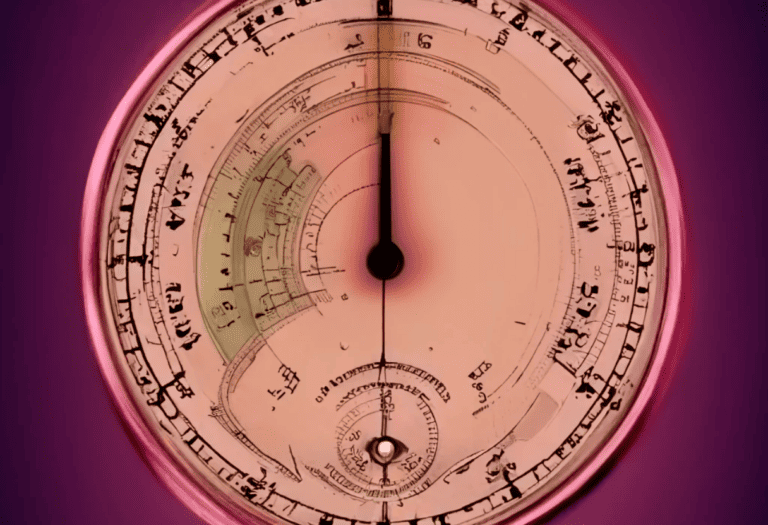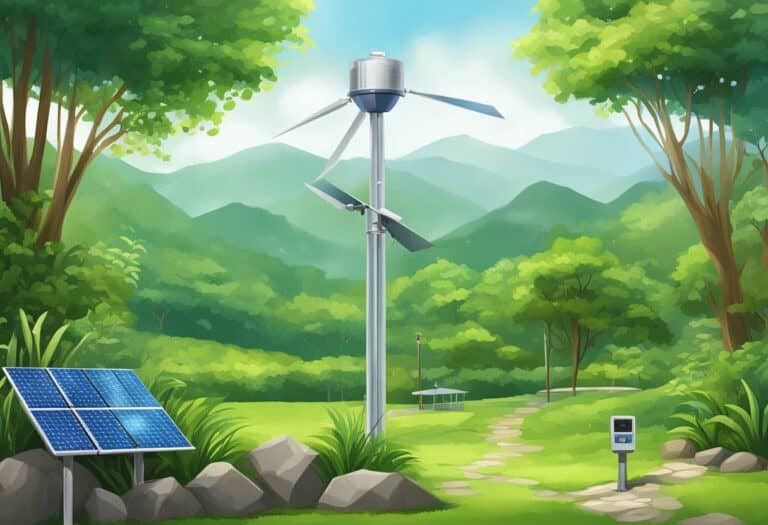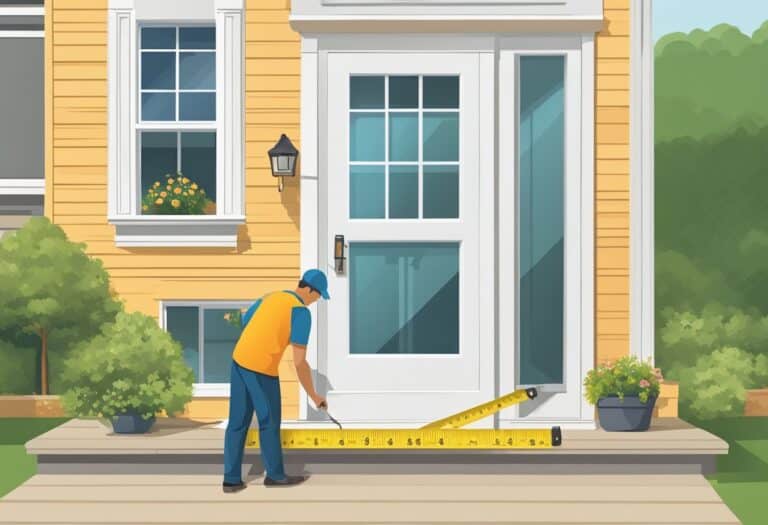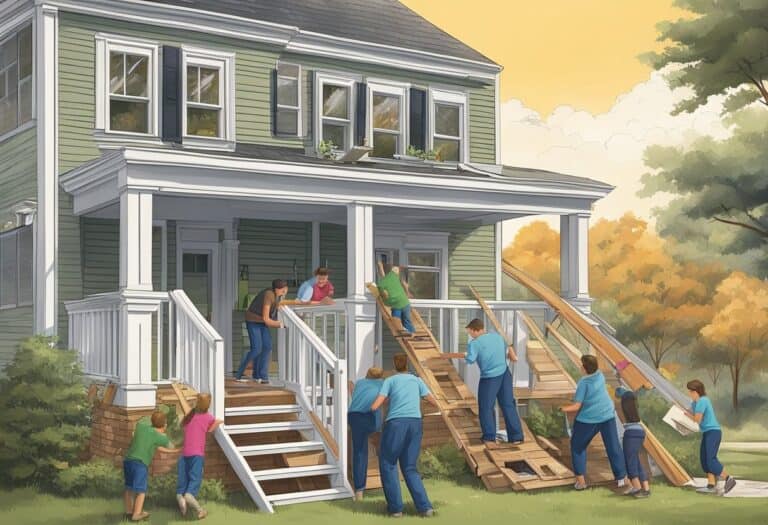Weather stations have become an invaluable tool for gardeners seeking to understand and adapt to their local environmental conditions.
By tracking temperature, humidity, rainfall, and other weather variables, these devices provide insights that can optimize plant care and growth. A home weather station can empower you to make informed decisions, ensuring your garden thrives in varying weather patterns.
As a gardener, integrating a weather station into your gardening routine allows for a proactive approach to plant maintenance. By selecting the right weather station, you can receive real-time data that is specific to your garden’s microclimate. This precision helps in planning watering schedules, protecting plants from frost, and determining the best times for planting and harvesting.
Gardeners, harness the power of weather stations! Track local climate data to optimize plant growth. Choose a station with features like Wi-Fi and smart home integration for remote monitoring and automated actions. Embrace tech to create a thriving, resilient garden that flourishes in any weather.
Understanding Weather Stations and Their Importance for Gardeners
Weather stations play a pivotal role in providing accurate, localized climate data, enabling you to make informed decisions for your gardening activities. By understanding the types of weather stations available, the key weather parameters they measure, and the benefits this data brings, you can greatly enhance the health and yield of your plants.
Types of Weather Stations
There are various types of weather stations, ranging from basic to advanced systems. A personal weather station is often sufficient for home gardening, giving you direct and immediate access to weather data from your garden. Options like the Netatmo Weather Station offer user-friendly interfaces and easy integration with smart home devices. More complex systems, such as the KestrelMet 6000, are designed for professional use and provide a deep dive into microclimate measurements. For more sophisticated needs, wireless weather stations like the Ambient Weather WS-5000 deliver real-time data without the hassle of running cables.
Key Weather Parameters and Sensors
A comprehensive weather station will track several key weather parameters. The essential sensors typically include a thermometer for outdoor temperature measurements, a humidity sensor to monitor humidity levels, and a rain gauge to measure rainfall. Advanced stations might also measure solar radiation, UV levels, barometric pressure, wind direction, and wind speed—captured by an anemometer. Understanding the dew point and heat index can warn you of conditions that might lead to plant stress or pest problems. For soil health, soil moisture sensors are critical in maintaining the right soil moist conditions for your plants.
Benefits of Weather Data for Gardening
The precise data from your weather station translates into a myriad of benefits for your garden. By tracking precipitation, you can align your watering schedule with recent rainfall to prevent overwatering or underwatering. Monitoring soil moisture ensures your plants have the optimal growing conditions. Data on ambient weather, including temperature and humidity, helps you protect your plants from extreme conditions and better plan your planting schedule. Effective use of your weather station contributes to a healthy, thriving garden by letting you anticipate weather changes and adjust your gardening strategies accordingly, thus enhancing your ability to carry out successful weather forecasting for your horticultural needs.
Selecting the Right Weather Station
When choosing a weather station as a gardener, focus on features that enhance accuracy and ease of use, such as wireless connectivity and integration with smart home systems.
Features to Look For
Wi-Fi Connectivity: A Wi-Fi-enabled weather station allows you to monitor your garden’s conditions from anywhere. Ensure your device can connect to home Wi-Fi for real-time data access.
Smart Home Integration: Compatibility with smart home assistants like Alexa can streamline your gardening routines. Look for stations that offer this feature to control your device with voice commands.
Accuracy and Reliability: Choose a model known for reliable data. The Davis Vantage Pro2 is recognized for its precise readings, vital for monitoring micro-climates in your garden.
Solar Power: For eco-friendliness and reliability, solar-powered stations like the WeatherFlow Tempest are preferable. They are equipped with a solar panel to ensure uninterrupted operation.
Expandability: Your weather station should grow with your garden. Opt for customizable models where you can add sensors as needed.
Data Logging: Stations with data logging provide historical data, which can be critical for understanding and predicting your garden’s needs. Look for models with a robust storage capacity.
Wireless Range: Wireless units should have an ample range to cover your entire garden without signal issues. Make sure the model you choose has a wireless range that meets your garden’s dimensions.
Weather Station Models for Gardeners
Ambient Weather WS-2902C: This station is excellent for integration with smart home systems, featuring Wi-Fi connectivity and data sharing capabilities.
La Crosse Technology V40-PRO-INT: Offers strong reliability with its accurate sensors and the ability to expand and add more sensors over time.
AcuRite 01536 Wireless Weather Station: Known for its easy-to-read display and comprehensive data for gardeners, this model is also customizable and allows for additional sensors.
Davis Vantage Pro2: A top-of-the-line option for serious gardeners seeking professional-grade accuracy and expandability, with a strong wireless range.
WeatherFlow Tempest Weather System: This innovative, solar-powered model provides accurate weather data and can integrate with smart home devices, offering features like Wi-Fi connectivity and data logging for detailed analysis.
By considering these features and models, you can find a weather station that will serve your garden’s specific needs and become a vital tool in your gardening success.
Integration with Gardening Activities

Understanding the relationship between weather conditions and your garden’s needs is crucial for optimizing plant growth and yield. By integrating gardening activities with real-time environmental data, you can make informed decisions that benefit the health of your plants.
Optimizing Irrigation and Plant Growth
Your garden’s irrigation needs can be more accurately managed by utilizing a gardening weather station. For example, a soil temperature sensor can tell you whether your soil is warm enough for seed germination or if your plants are at risk of frost damage. A smart irrigation app might use data from outdoor humidity and local weather trends to adjust watering schedules, ensuring that your vegetables receive the right amount of water at the right time.
- Sunlight and UV index: These factors influence photosynthesis and water requirements. Track the amount of sunlight your garden gets and adjust your watering to the optimal growth range.
- Frost and Snowfall: Prepare for frosts by monitoring forecasts and mitigate risks by covering sensitive plants.
Monitoring and Adapting to Seasonal Changes
To maintain a flourishing garden throughout the year, monitor seasonal changes in weather, including wind chill, moon phase, and more. This information can help you determine the best gardening activities for each season.
- Growing Season: Know when to plant by keeping track of the local frost dates and growing season duration.
- Indoor Temperature and Outdoor Humidity: These readings are essential for seed starting indoors and managing humidity levels for indoor and outdoor plants.
- Trends: Look at long-term weather trends to plan your garden layout and crop rotation for the coming years, benefiting yield.
Incorporate this localized environmental data into your gardening routine, and you’ll be equipped to create a resilient, thriving garden that can adapt to the unpredictable nature of the weather.
Advanced Data Utilization
In managing your garden, leveraging advanced data from weather stations can provide you with critical insights to optimize plant growth and ensure robust yields. High-level data analysis tools now enable you to discern patterns and react to climatic changes with precision.
Trends and Detailed Analysis for Gardening
With a modern Wi-Fi-enabled weather station, you gain the ability to track a comprehensive array of weather parameters. This data is essential for anticipating gardening activities. You can monitor sunlight and indoor temperature trends, ensuring that your plants receive the optimal amount of energy and warmth for photosynthesis.
- Forecast: Utilize short-term and long-term weather forecasts to plan irrigation and protective measures.
- Moon phase: Rather traditional, but certain gardening activities like planting may be scheduled according to moon phases.
- Lightning detection: Protect sensitive electronics or shelter specific plants with early warnings from lightning detection features.
Data logging serves as a powerful tool to observe historical weather conditions and trends, creating a chance for you to fine-tune your gardening practices over time. Increased accuracy of weather predictions allows you to take preventive actions, such as moving plants indoors before a detrimental weather event occurs.
Smart Home and Tech Integration
Smart home integration takes the data utility further, allowing you to connect your weather station to other devices. For instance, integrating with an Alexa device can enable voice-activated actions based on real-time data.
- Indoor temperature and humidity settings can trigger automated systems within your smart home to adjust the environment for indoor plants.
- Sunrise and sunset data can inform lighting schedules, enhancing plant growth and conserving energy.
- Weather alerts can be configured to notify you directly or trigger automated systems to protect your garden.
Connect a leak detector to your smart system to preemptively tackle any water-related issues within your greenhouse. Finally, add-ons like weather alerts and lightning detection enhance your gardening success by alerting you to incoming weather changes, with notifications sent directly to your mobile device or email.
By embracing these technologies, you position yourself at the forefront of gardening innovation, making informed decisions that lead to flourishing plants.
Frequently Asked Questions
When it comes to enhancing your gardening with technology, selecting the right weather station is key. These FAQs shed light on the features and maintenance needs that will guide your choice for a home gardening weather station.
What features should I look for when selecting a weather station for home gardening?
You should consider a weather station that offers comprehensive data such as temperature, humidity, rainfall, wind speed and direction, and barometric pressure. Look for a unit with a robust build quality to withstand the elements and the ability to transmit data to your mobile device for convenience.
How do smart weather stations benefit gardeners for remote monitoring?
Smart weather stations allow you to monitor real-time conditions from any location via a smartphone or computer. This capability enables you to make timely decisions for watering, protecting plants from extreme weather, and applying fertilizers or pesticides optimally.
Can solid-state weather stations improve accuracy and reliability for garden activities?
Solid-state weather stations use advanced technology that can enhance reliability and accuracy of weather readings. They are less prone to mechanical wear and often offer higher precision, which is crucial for tasks like irrigation scheduling and frost monitoring.
What are the key differences between the Ambient Weather WS-2902A and WS-2902D models?
The Ambient Weather WS-2902A is known for its affordability and user-friendly interface, while the WS-2902D offers additional features such as PM2.5 and PM10 sensors for particulate monitoring which can be vital for gardens near urban areas.
In what ways are non-moving part weather stations advantageous for gardeners?
Weather stations without moving parts, such as those using ultrasonic sensors, are typically more durable and require less maintenance. This can be advantageous as it reduces the likelihood of damage from storms or debris, ensuring more consistent data collection for your gardening needs.
How often should a home weather station be maintained or replaced for optimal performance?
Regular maintenance, such as cleaning sensors every few months and checking for firmware updates, should be performed to ensure accuracy. Replacement might be necessary every few years or if the station consistently gives erroneous data which can misinform your gardening decisions.




![Gifts for Weather Geeks and Meteorologists: Top [year] Picks](https://observationhobbies.com/wp-content/uploads/2024/01/image-452-768x525.jpeg)


![Best Hygrometer Models of [year]](https://observationhobbies.com/wp-content/uploads/2024/01/Best-Hygrometer-Models-of-2024-768x525.png)